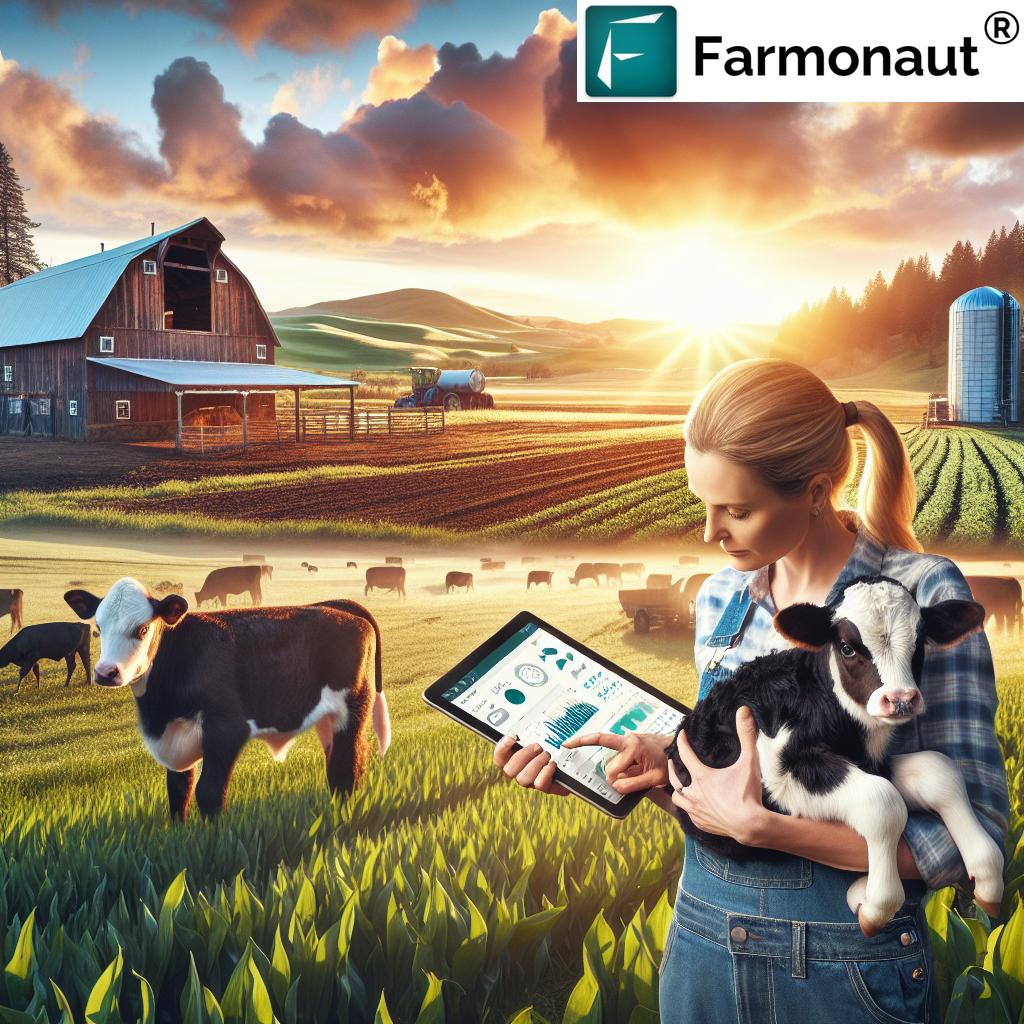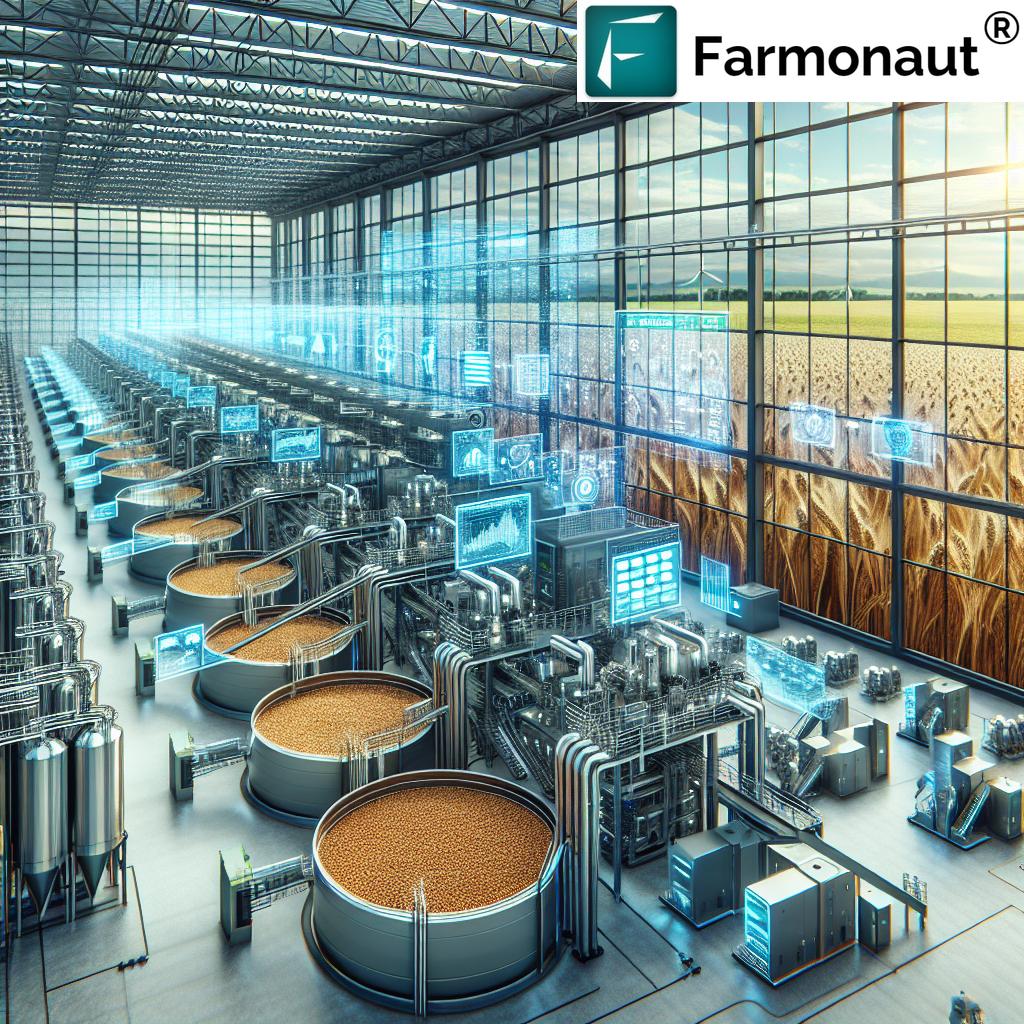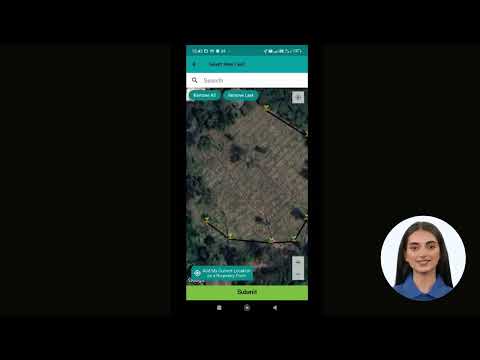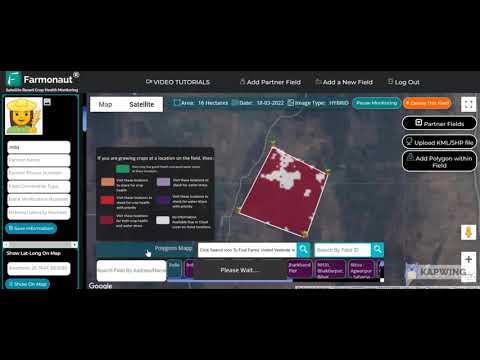From Calves to Freeze-Drying: A Day in the Life of an Oregon Farm with Smart Farming Solutions
“Smart farming solutions can increase crop yields by up to 30% while reducing water usage by 20-50%.”
Welcome to our little slice of heaven in the heart of Oregon! We’re thrilled to take you on a journey through a typical day on our farm, where traditional values meet cutting-edge technology. As we navigate the challenges and joys of modern farming, we’ll show you how smart farming solutions and precision agriculture tools are transforming our daily operations.
Dawn Breaks: The Early Bird Gets the Worm (and the Data)
Our day begins before the sun peeks over the horizon. As we step out onto the dewy grass, the crisp Oregon air fills our lungs, and we’re reminded why we chose this life. But before we head to the barn, we pull out our smartphones to check the latest data from our farm management software.
Thanks to agricultural data analytics, we have a wealth of information at our fingertips. Our app shows us the overnight temperature fluctuations, soil moisture levels, and even predictions for today’s weather. This early morning ritual has become an essential part of our crop yield optimization strategy.

Morning Chores: Where Tradition Meets Innovation
As we make our way to the barn, we’re greeted by the familiar sounds of our livestock. But even here, in this most traditional of farm settings, agricultural technology innovations are making their mark.
- Our dairy cows wear smart collars that track their movement, health, and milk production.
- Automated feeders ensure each animal receives the perfect balance of nutrients.
- A robotic milking system allows our cows to be milked on their own schedule, reducing stress and increasing productivity.
These livestock care best practices have not only improved the health and happiness of our animals but have also streamlined our morning routine, allowing us to focus on other important tasks.
Mid-Morning: Crop Check and Drone Flight
With the livestock taken care of, it’s time to turn our attention to the crops. We hop on our ATVs and head out to the fields, but not before launching our drone for an aerial survey. This eye in the sky is one of our favorite precision agriculture tools, providing high-resolution images of our crops that we can analyze for signs of stress, pest infestation, or nutrient deficiencies.
As we ride along the edge of our wheat field, we pull up the drone footage on our tablets. The NDVI (Normalized Difference Vegetation Index) overlay shows us areas of concern that we might have missed from ground level. We make note of a patch that’s showing signs of water stress and add it to our task list for targeted irrigation later in the day.
Precision Irrigation: Every Drop Counts
Speaking of irrigation, gone are the days of “set it and forget it” watering schedules. Our smart farming solutions include a state-of-the-art irrigation system that uses real-time data from soil moisture sensors, weather forecasts, and crop growth models to deliver water precisely where and when it’s needed.
We pull up the irrigation control panel on our smartphones and make adjustments based on this morning’s data. The system automatically calculates the optimal watering schedule for each sector of our farm, taking into account factors like soil type, crop stage, and expected rainfall. This level of precision not only conserves water but also promotes healthier plants and higher yields.
Lunchtime: A Moment to Reflect and Plan
As the sun reaches its zenith, we gather in the farmhouse kitchen for a well-deserved lunch break. Over steaming mugs of coffee and hearty sandwiches made with produce from our own fields, we discuss the morning’s findings and plan for the afternoon ahead.
Our conversation is peppered with terms that would have seemed foreign to our grandparents: IoT sensors, machine learning algorithms, blockchain traceability. Yet, at its core, our mission remains the same as theirs: to be good stewards of the land and to produce the highest quality food possible.
We take a moment to check our farm management software once more, reviewing the day’s tasks and prioritizing our afternoon activities. The software integrates data from various sources, including our equipment sensors, weather stations, and market price feeds, to help us make informed decisions about everything from pest management to harvest timing.
Afternoon: Field Work and Equipment Maintenance
With renewed energy, we head back out to tackle the afternoon’s tasks. Today, that includes spraying a section of our corn field that our morning drone flight identified as having a potential pest issue. But before we fire up the sprayer, we consult our precision agriculture tools once more.
- The pest management module in our farm software provides a detailed analysis of the infestation, including the type of pest and the optimal treatment strategy.
- Our GPS-guided sprayer ensures that we apply the exact amount of pesticide needed, reducing waste and minimizing environmental impact.
- Real-time weather data helps us choose the best time to spray, taking into account wind speed and direction to prevent drift.
This targeted approach to pest management is just one example of how sustainable farming methods and advanced technology can work hand in hand.

Equipment Maintenance: Preventing Problems Before They Start
With the spraying complete, we turn our attention to equipment maintenance. Our fleet of tractors, combines, and other machinery is equipped with IoT sensors that continuously monitor performance and alert us to potential issues before they become major problems.
We pull up the maintenance dashboard on our tablets and see that one of our tractors is due for an oil change. Thanks to predictive maintenance algorithms, we can schedule this routine task at a time that won’t disrupt our operations, avoiding costly breakdowns during critical periods like planting or harvest.
“Freeze-drying equipment can preserve food for up to 25 years, maintaining 97% of its nutritional value.”
Evening: Data Analysis and Planning for Tomorrow
As the sun begins to set, casting a golden glow over our fields, we wrap up our outdoor work and head back to the farmhouse. But our day isn’t over yet. The evening hours are often dedicated to analyzing the data collected throughout the day and planning for tomorrow.
We settle into our home office, surrounded by a mix of traditional farming almanacs and high-tech gadgets. Our farm management software compiles data from various sources, including:
- Satellite imagery
- Drone footage
- Weather stations
- Soil sensors
- Equipment telemetry
- Market price feeds
This wealth of information allows us to make data-driven decisions about every aspect of our operation, from crop rotation plans to marketing strategies.
The Future of Farming: Embracing Innovation While Honoring Tradition
As we review the day’s data and make plans for tomorrow, we can’t help but reflect on how much farming has changed in just a few generations. The integration of smart farming solutions and precision agriculture tools has revolutionized the way we work, allowing us to be more efficient, sustainable, and productive than ever before.
Yet, at its heart, farming remains a profession deeply rooted in tradition and a connection to the land. The challenge – and the joy – of modern farming lies in finding the balance between embracing innovation and honoring the wisdom of those who came before us.
Spotlight on Freeze-Drying: Preserving the Harvest
One of the most exciting agricultural technology innovations we’ve incorporated into our farm is our freeze-drying equipment. This cutting-edge technology allows us to preserve a wide variety of fruits, vegetables, and even meats, locking in nutrients and flavor for long-term storage.
The freeze-drying process works by:
- Freezing the food at extremely low temperatures
- Creating a vacuum around the frozen food
- Slowly raising the temperature, causing the ice to sublimate directly into vapor
- Removing the water vapor, leaving behind perfectly preserved food
This technology has opened up new markets for us, allowing us to sell our produce year-round and reduce waste during peak harvest times. It’s also become an essential part of our own food security plan, ensuring we have access to nutritious, home-grown food even in the off-season.
The Role of Farmonaut in Our Smart Farming Journey
As we continue to embrace agricultural technology innovations, we’ve found invaluable support in platforms like Farmonaut. This advanced farm management solution has become an integral part of our daily operations, offering a range of tools that enhance our decision-making and streamline our processes.
Some of the key features we rely on include:
- Satellite-based crop health monitoring
- AI-powered advisory systems
- Weather forecasting and alerts
- Resource management tools
By leveraging Farmonaut’s technology, we’ve been able to take our precision agriculture efforts to the next level, optimizing our resource use and improving our overall farm productivity.
If you’re interested in exploring how Farmonaut can benefit your farming operation, check out their offerings:
For developers looking to integrate agricultural data into their own applications, Farmonaut offers a robust API:
And for those who prefer mobile access, Farmonaut is available on both Android and iOS platforms:
The Impact of Smart Farming Solutions on Our Daily Activities
To give you a clearer picture of how smart farming solutions have transformed our daily operations, we’ve put together a comparison table:
| Farm Activity | Traditional Method | Smart Farming Solution | Time Saved (estimated) | Efficiency Gain (estimated %) |
|---|---|---|---|---|
| Livestock Monitoring | Manual observation and record-keeping | Smart collars with health and activity tracking | 2-3 hours daily | 40% |
| Crop Health Assessment | Visual inspection on foot | Drone and satellite imagery with NDVI analysis | 4-5 hours weekly | 60% |
| Irrigation Management | Fixed schedule or manual adjustments | Automated, sensor-driven system | 1-2 hours daily | 30% |
| Feed Management | Manual distribution and monitoring | Automated feeders with consumption tracking | 1-2 hours daily | 35% |
| Weather Forecasting | Reliance on general forecasts | Hyperlocal predictions with field-specific data | 30 minutes daily | 25% |
| Harvest Planning | Based on calendar and experience | Data-driven optimal timing predictions | 2-3 hours weekly | 45% |
| Equipment Maintenance | Scheduled or reactive maintenance | Predictive maintenance based on real-time data | 3-4 hours weekly | 50% |
As you can see, the integration of smart farming solutions and precision agriculture tools has led to significant time savings and efficiency gains across all aspects of our farm operations. This allows us to focus more on strategic planning and innovation, ultimately leading to better crop yields, healthier livestock, and a more sustainable farming practice.
Embracing the Future While Honoring the Past
As we wrap up our day on the farm, we’re filled with a sense of gratitude for the technology that has made our work more efficient and sustainable. But we’re equally thankful for the lessons passed down through generations of farmers who came before us.
The future of farming lies in finding the perfect balance between innovation and tradition. It’s about using smart farming solutions to enhance our understanding of the land and our crops, while still maintaining that deep, intuitive connection to the rhythms of nature that has always been at the heart of agriculture.
We hope this glimpse into our daily life has given you a better understanding of how modern farming is evolving. Whether you’re a fellow farmer looking to incorporate more technology into your operation, or simply someone curious about where your food comes from, we encourage you to stay informed about the exciting developments in agricultural technology.
Remember, every time you sit down to a meal, you’re connecting with farmers like us who are working hard to feed the world in the most efficient and sustainable way possible. And that’s something worth celebrating, don’t you think?
Frequently Asked Questions
- What is precision agriculture?
Precision agriculture is an approach to farm management that uses information technology and specialized equipment to optimize crop yields and reduce waste. It involves collecting and analyzing data about variability in fields to make more precise decisions about planting, fertilizing, and harvesting crops. - How does smart farming benefit the environment?
Smart farming can reduce the environmental impact of agriculture by optimizing the use of resources like water and fertilizers, reducing chemical runoff, and minimizing soil erosion through targeted interventions. - What are some common precision agriculture tools?
Common precision agriculture tools include GPS-guided tractors, drones for aerial imaging, soil sensors, weather stations, and farm management software that integrates data from various sources. - How does freeze-drying technology work in agriculture?
Freeze-drying, or lyophilization, removes moisture from food products by freezing them and then creating a vacuum that allows the ice to sublimate directly into vapor. This process preserves the food’s structure, flavor, and nutritional content for long-term storage. - What is the role of AI in modern farming?
AI in farming can analyze large amounts of data to provide insights and recommendations on crop management, predict disease outbreaks, optimize irrigation, and even control autonomous farm equipment.






